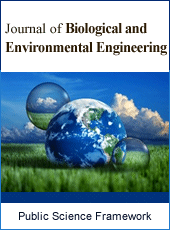Journal of Biological and Environmental Engineering
Articles Information
Journal of Biological and Environmental Engineering, Vol.2, No.2, Mar. 2017, Pub. Date: Aug. 1, 2017
The Practice of Purification Plant in Response to High Turbidity Raw Water —Especially in Extreme Weather
Pages: 10-14 Views: 2723 Downloads: 909
[01]
Pei-Ling Hou, Purification Division, Taipei Water Department, Taipei, Taiwan.
[02]
Deng-Fa Shiu, Purification Division, Taipei Water Department, Taipei, Taiwan.
The aim of this investigation is: A hydrology and water turbidity monitoring mechanism in Great Taipei catchment area which can be used as precautionary warning for raw water turbidity and flux of Xindian Creek during typhoon. Emergency plan for purification plant before typhoon approaches includes: 1. emptying sludge in all sedimentation basins; 2. timely measurement of turbidity at raw water intake by technicians during typhoon; 3. reserving back-up sedimentation basins; 4. reducing the water influx treatment when water turbidity above control level; 5. maintaining the flux of full raw water tunnel if purification process stops water inflow; 6. diluting high turbidity raw water with reservoir water. Limited to existing devise, Zhitan Purification Plant has enhanced effectiveness of the desilting basin to reduce the turbidity level of raw water. Most importantly, accurate coagulation dosing helps to ensure excellent water quality and stable water supply.
Purification Plant, High Turbidity Raw Water, Extreme Weather
[01]
Cheng-Liang CHEN and Pei-Ling HOU (2006)., Automatic Control Design and Perform for Coagulation Chemical Dosing of Potable Water, (IWA).
[02]
Chien-Hsing CHU (2015)., Meeting on the Impact and Survive from Extreme Drought of Climate Change, (IWA-ASPIRE).
[03]
Taurai Jowa and Liberty L Mguni (2015)., Treatment of Low Turbidity Water Using Poly-Aluminium Chloride (PAC) and Recycled Sludge: Case study Chinhoyi, (ZJST).
[04]
Yan Wang and Baoyu GAO (2008), The characterization and flocculation efficiency of composite flocculant iron salts–polydimethyldiallylammonium chloride (Chmical Engineering Journal).
[05]
A. Koohestanian, M. Hosseini and Z. Abbasian (2008), The Separation Method for Removing of Colloidal Particles from Raw Water (American-Eurasian J. Agric. & Environ. Sci.).
[06]
M. Rossini and J. Garcia Garrido and M. Galluzzo (1999) Optimization of the coagulation–flocculation treatment: influence of rapid mix parameters (Water Research)
[07]
Chang, E.-E., Chiang, P.-C., Huang, S.-M. & Lin, Y.-L. (2007) Development and implementation of performance evaluation system for a water treatment plant: case study of Taipei water treatment plant. Pract. Periodical of Haz., Toxic, and Radioactive Waste Mgmt. 11(1), 36–47.
[08]
Hoda Fakour and Shang-Lien Lo and Tsair-Fuh Lin (2016)Impacts of Typhoon Soudelor (2015) on the water quality of Taipei, Taiwan(Scientific Reports)
[09]
Lin, T. C. et al (2003) Treatment of High-Turbidity Raw Water through Coagulation-Flocculation Influence of typhoon disturbances on the understory light regime and stand dynamics of a subtropical rain forest in northeastern Taiwan (J. For. Res. 8, 139–145)
[10]
Australian drinking water guidelines, Fact sheets: Physical and chemical characteristics: Turbidity, (Version 2.0) 1104-1107 (Australian Water and Wastewater Association, 2013).

ISSN Print: Pending
ISSN Online: Pending
Current Issue:
Vol. 2, Issue 2, March Submit a Manuscript Join Editorial Board Join Reviewer Team
ISSN Online: Pending
Current Issue:
Vol. 2, Issue 2, March Submit a Manuscript Join Editorial Board Join Reviewer Team
| About This Journal |
| All Issues |
| Open Access |
| Indexing |
| Payment Information |
| Author Guidelines |
| Review Process |
| Publication Ethics |
| Editorial Board |
| Peer Reviewers |


